The healthcare industry is striving to meet its ESG goals and be a part of the solution for climate change. Here are common questions that are asked when it comes to achieving this goal.
Facilities Managers and Engineers are instrumental in identifying and implementing energy-efficient measures, reducing waste, and promoting sustainable building practices. Their expertise in building operations and maintenance ensures that healthcare ESG initiatives are seamlessly integrated into the facility's day-to-day operations.
They source the electricity bills, have a say in keeping the appearance of the location to meet their image, and provide and locate access to important infrastructure questions (ex. breaker, electrical room, and generator).
They will bring all the questions and concerns that they might have given that the panels will likely be going on top of the facility, so they’ll bring their insight that is going to be crucial during the process.
Engineers are going to have a better understanding of the conditions of the facility such as the age of the roof, how much energy the facility uses, and how much they’re spending on electricity.
They also have a say in what they want the hospital to look like with the addition of solar panels. Once they approve the design, they will send it to the board of directors and executive board to vote on it.
The ESG manager brings expertise in environmental sustainability to the table. They develop and implement ESG strategies aligned with the organization's goals, ensuring that environmental considerations are integrated into decision-making processes.
They will have a plan or roadmap that they have been working through and collaborating with the executive board, which will show what tackling ESG will look like for the organization. This could be from a carbon reduction standpoint or any sustainability standpoint.
The C-Suite positions are going to want to get involved early on in this process.
The CFO will be able to understand the metrics that the project needs to fit within the budget to make sure that the project is possible. They provide tax information to see how the tax credit incentives can be applied to the installation.
Every CFO is specific to their location, meaning that they are not the CFO of the entire organization as a whole.
The CEO will be able to give high-level insight and feedback on what they think needs to happen in order to make the project a success. They check to make sure the project reflects the overall mission of the company.
Both of these positions will be able to give a big-picture view of what their organization is looking for and their insight into what they want to uncover with their ESG goals.
The CSO is involved with the facility's emission of their entire supply chain. 40% of the healthcare industry's scopes are scope 3 emissions, which include supplies and purchased services. It’s the CSO's responsibility to control those emissions. This role cares more about the total emissions resulting from the facility's supply chain.
The CIO is recommended to be a part of the conversation of achieving a facility's ESG goals because they oversee what the facility invests in to make their organization better. They are going to
To generate substantial returns for the company, they employ investment strategies. Therefore, investing capital to increase their ROI from the solar system will be a top priority.
What benefits does the IRA provide for clean energy installations?
In 2022, the Inflation Reduction Act (IRA) brought some positive news for the healthcare industry. It offers many benefits that can enhance a healthcare facility's sustainability initiatives, reduce costs, and improve patient care.
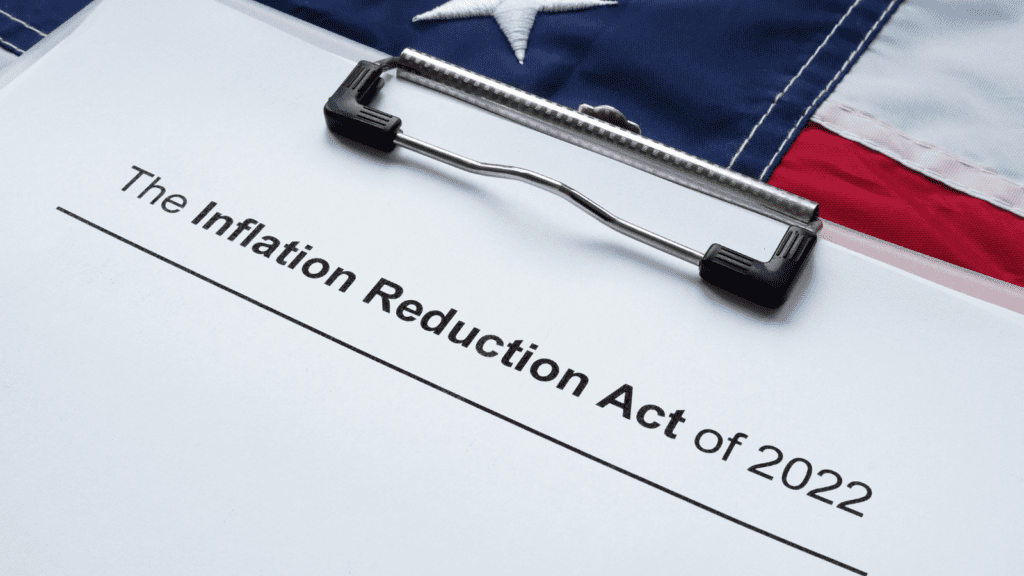
The IRA extends and expands the federal solar tax credit (ITC), providing a significant 30% tax break on the cost of installing solar panels. This tax incentive can substantially reduce the upfront costs associated with investing in solar, making it a more financially attractive option for healthcare organizations.
Healthcare facilities are among the most energy-intensive buildings in the commercial sector, accounting for nearly 10% of all commercial energy use in the United States. By adopting solar power, healthcare organizations can significantly reduce their energy costs, leading to financial savings and a reduced carbon footprint.
The transition to solar energy can contribute to improved patient care and well-being in several ways. By reducing air pollution and greenhouse gas emissions, solar power promotes cleaner air quality, which can benefit patients with respiratory illnesses and allergies.
Also, the cost savings generated through solar energy can be reinvested into patient care services and technology upgrades.
Solar energy is a visible symbol of a healthcare organization's commitment to sustainability and responsible business practices. This commitment can enhance the organization's reputation among environmentally conscious patients, employees, and investors, further strengthening its brand and attracting employees with the same morals.
By working towards their ESG goals and leveraging the IRA's incentives, healthcare organizations can position themselves as leaders in sustainability and innovation. This leadership can inspire other healthcare providers and businesses to adopt similar practices, creating a domino effect of positive environmental impact in the industry.
The Inflation Reduction Act (IRA) has paved the way for a more sustainable future for the healthcare industry. By capitalizing on the act's incentives, healthcare organizations can reap the benefits including reduced energy costs, minimized environmental impact, enhanced patient care, improved reputation, and be seen as leaders in sustainability and innovation.
Will installing solar disrupt my facility's operations?
The prospect of integrating solar energy into a healthcare facility's sustainable solutions may raise concerns about potential disruptions to healthcare facility operations.
Solar development companies prioritize minimizing disruption and work closely with facility managers to ensure a seamless transition. They make sure that the project is installed at a less busy time for them to provide as little impact as possible. In most cases, solar panel installation can be completed without interrupting patient care or disrupting essential services.
https://www.facilitiesnet.com/green/article/Why-Facility-Managers-Shoul
https://www.pwc.com/us/en/industries/health-industries/library/esg-health
https://www.ashe.org/sustainability/guide
https://betterbuildingssolutioncenter.energy.gov/sites
Energy prices are increasing.
The cost of electricity and natural gas, the two main sources of energy for cold storage facilities, has been rising steadily in recent years. This is due to a number of factors, including increased demand and supply chain disruptions.
“So far this year, electricity costs at our cold storage warehouses are significantly higher than during the same period last year.
Some experts say that the spike in electricity from 2022 to 2023 will subside, but the electricity demand will continue to increase with the push for more clean energy and EVs. We will always focus on energy, specifically the electricity cost.”
- RLS Logistics
To maintain the necessary temperatures, cold storage facilities must run their refrigeration equipment 24/7. This can use a significant amount of energy, especially for older facilities that are not as efficient.
Meeting the demand for cold storage is a tough challenge, especially with all of the rising costs. The global cold storage market is expected to grow from $265 billion in 2022 to about $330 billion between 2022 and 2030.
This growth is being driven by a number of factors, including the increasing demand for frozen food, the growth of e-commerce, and the need to store vaccines and other pharmaceuticals.
Cold storage businesses are having to pass on the increased cost of utilities to their customers. This can make it more expensive for consumers to purchase frozen food and other products that require cold storage.
The rising cost of utilities is squeezing the profits of cold storage businesses. This can make it difficult for businesses to invest in new technologies and expand their operations.
Cold storage businesses that are unable to control their energy costs may be at a competitive disadvantage to businesses that are able to do so. This is especially true in markets where there is a lot of competition for cold storage space.

Cold storage operators are facing rising costs for energy, labor, and transportation. These rising costs are forcing cold storage businesses to raise prices for their customers. This can make it difficult for them to compete with other food supply chain participants, such as grocery stores and restaurants.
Lineage Logistics, the largest cold storage operator in the United States, has announced plans to raise prices for its customers by 5% in 2023. This is a significant increase, and it reflects the challenges cold storage operators are facing.
The rising cost of energy is one of the biggest challenges for cold storage operators. The facilities require a lot of energy to operate, and even a small increase in energy costs can have a significant impact on their bottom line.
The cost of labor is another major expense for cold storage businesses. As inflation drives up wages, cold storage businesses will have to pay more to attract and retain workers.
In addition to rising energy and labor costs, cold storage businesses are also facing rising transportation costs. These businesses rely on transportation to move food products to and from their facilities. As the cost of transportation increases, so will the costs of doing business for cold storage businesses.
It’s unknown how the rising costs will impact the cold storage industry in the long term. However, it is clear that cold storage operators are facing significant challenges in the short term.
The cold storage industry is growing rapidly, driven by the rise of e-commerce and the increasing demand for cold-stored food products. However, the industry is struggling to retain workers.
There are a few reasons for the labor shortage in the cold storage industry.
Americold Realty Trust, the second-largest cold storage owner in North America, has increased wages and benefits for its workers in an effort to bring more workers in. A number of huge companies are following in their footsteps and doing the same for their workers.
Cold storage facilities require a variety of materials to operate, including insulation, refrigeration equipment, and warehouse racking. The cost of these materials has increased significantly in recent years due to a number of factors, including rising inflation and supply chain disruptions.
This issue is putting pressure on cold storage margins and making it more difficult for operators to operate profitably. To combat this, cold storage operators are taking a number of steps, such as sourcing materials from alternative suppliers, negotiating lower prices with existing suppliers, investing in more efficient equipment, and passing on some of the cost increases to customers.
In a market with rapidly changing prices, it's difficult for cold storage facility owners to predict future expenses, estimate customer demand, and effectively manage their finances. The uncertainty caused by inflation can make long-term planning and financial stability a significant challenge.
The rising cost of doing business is having a negative impact on the cold storage industry. Some cold storage facilities are being forced to raise prices to offset the rising costs. Other cold storage facilities are being forced to cut costs, which can lead to a decrease in the quality of service.
Cold storage facilities consume a significant amount of energy, with refrigeration alone accounting for up to 80% of total energy consumption. Other components, such as lighting, pumps, motors, conveyors, and fans, also consume energy, contributing to the high overall energy costs of operating these facilities. Depending on the size of the facility, it may use several million kWhs per year.
However, cold storage facilities are becoming more energy efficient, thanks to advances in technology. This transformation includes reducing energy consumption, integrating renewable energy sources, and smart control systems. These efforts are both economically and environmentally beneficial, as they reduce the industry's carbon footprint and align with global sustainability goals.
Utilizing demand management technology is a valuable tool for cold storage facility owners. It allows them to gain a deep understanding of their facility's operational patterns, particularly regarding energy usage. This insight enables strategic monitoring, helping owners make informed decisions on optimizing energy efficiency.
It's highly recommended to collaborate closely with the frontline facility staff and the engineering team. Their expertise in the facility's workings and the nuances of refrigeration equipment can provide valuable insights and contribute to more effective energy management strategies.
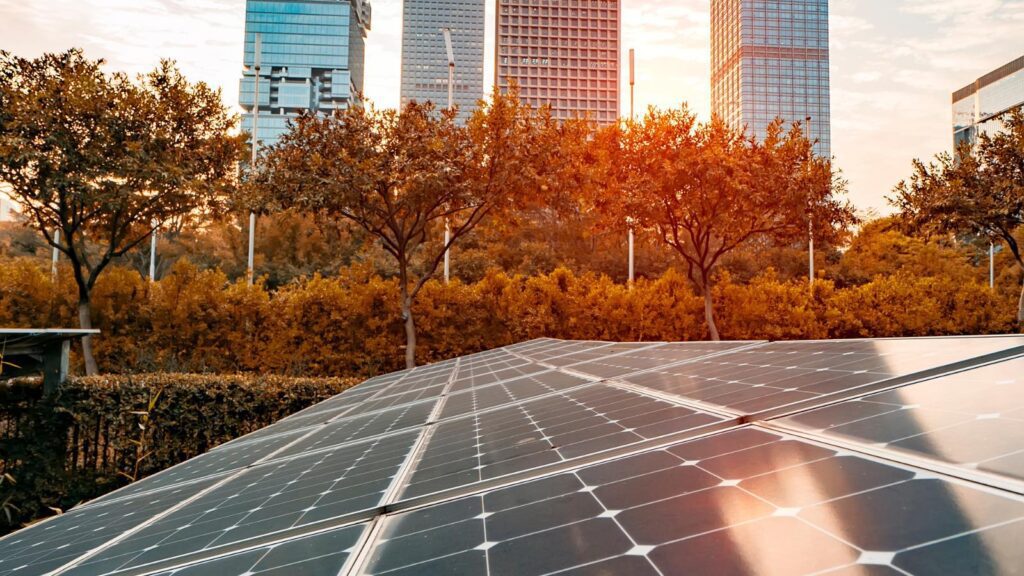
Cold Storage facilities have relied on fossil fuels to power their operations, which has a significant environmental impact. However, solar-powered cold storage facilities can generate their own clean electricity from the sun, reducing their greenhouse gas emissions and contributing to cold storage industry's ESG goals.
The global solar-powered refrigeration market is projected to reach $990 million by 2025, demonstrating the industry's recognition of its benefits.
Solar PPAs can help cold storage facilities reduce their electricity costs and improve their sustainability. Under a solar PPA, a solar developer installs and maintains solar panels on a cold storage facility's roof.
The cold storage facility then purchases the electricity generated by the solar panels at a discounted rate. This can lead to significant savings on electricity bills, especially in the long term.
PPAs are a cost-effective way for businesses to save money on their electricity bills without having to invest any upfront capital.

Financial Benefits
The Inflation Reduction Act (IRA) is a major opportunity for cold storage facilities to reduce operational costs, decrease grid reliance, and support renewable energy. The IRA provides $369 billion in federal incentives, including tax credits that cover up to 70% of the cost of a solar system, and additional grants.
Cold storage facilities that install solar often experience a significant 35% reduction in energy costs, with an average payback period of 5 years. This makes solar power a cost-effective and sustainable investment.
Energy Savings
When combined with battery storage, solar can save money on energy bills and improve resilience during power outages. Solar also provides reliable energy, which allows cold storage facilities to offset their peak demand charges, saving them even more money.
Environmentally Friendly
Solar-powered refrigeration reduces the cold storage facility's carbon emissions and carbon footprint, making it a sustainable choice for the industry.
A Chevrolet dealership in Clearwater, Florida partnered with ESA to meet its current and future energy needs, including the charging of upcoming new electric vehicles.
By installing 729.96 kW of solar panels, the dealership reduced its total electric bill by 84%, saving over $3 million over the next 25 years.
The project will generate a 16% internal rate of return, paying for itself in just under 6 years.
The healthcare industry contributes to approximately 8.5% of total greenhouse gas emissions in the United States and approximately 4.5% of global emissions. These emissions are generated mostly from the continuous operation of energy-draining facilities and the extensive production, food, medical devices, and various goods and services bought, and sometimes wasted, all in the course of providing care.
Scope emissions are a way of classifying greenhouse gas emissions based on where they occur in the value chain.
Within the healthcare sector, emissions are categorized into three scopes:
Scope 1: These emissions originate from sources owned or directly managed by healthcare organizations, including emissions from facilities like specific medical gases and on-site boilers.
Examples:
Scope 1 emissions make up approximately 7 percent of the total emissions from the healthcare sector.
Scope 2: This category includes indirect emissions resulting from the generation of energy purchased by health systems, primarily in the form of electricity.
Example:
Scope 2: emissions account for around 11 percent of emissions related to healthcare.
Scope 3: Covering all additional indirect emissions, Scope 3 emissions result from the production and transportation of goods and services acquired by the healthcare sector. This category includes emissions associated with pharmaceuticals and a range of medical products and devices.
Examples:
Scope 3 emissions constitute over 80 percent of the total emissions in the healthcare industry.

In general, having a strong ESG program suggests your organization is good at handling risks, saving money, and adapting to community needs.
Since healthcare is all about taking care of people and communities, ESG practices are a good match. Putting all these efforts into one ESG plan helps ensure the organization keeps growing and improving.
Hospitals and healthcare groups produce about 8.5% of the U.S.'s greenhouse gas emissions.
To deal with this, small changes can be made that help the environment and save on costs.
These might include:
ESG can be difficult to measure and take action on, especially in the healthcare industry. Healthcare organizations have complex operations and supply chains, and they often face competing priorities. There is no universal or one-size-fits-all method for ESG. Each healthcare organization needs to develop its own ESG strategy based on its unique goals.


Decarbonization in the healthcare industry is the process of reducing greenhouse gas emissions from the sector. It’s important that organizations take this matter seriously because the healthcare industry is a major contributor to climate change.
The healthcare industry has several avenues for achieving decarbonization. Transitioning to renewable energy sources like solar and wind power is one approach, alongside improving energy efficiency through the use of more advanced equipment and sustainable infrastructure. Healthcare organizations can also reduce their emissions by reducing waste, investing in sustainable transportation, and purchasing sustainable products and services.
Decarbonizing the healthcare industry has a number of benefits. It can help to reduce the sector's environmental impact, improve public health, and save money. By reducing their emissions, healthcare organizations can also improve their reputation and attract and retain patients and employees.
On April 22, 2022, the Department of Health and Human Services (HHS), in partnership with the White House, issued a call to action for the healthcare industry to commit to reducing greenhouse gas emissions 50% by 2030 through an initiative aimed at reducing emissions across the sector, the Climate Pledge.
These ambitious pledges align with President Biden's objective of achieving a 50-52% reduction in nationwide greenhouse gas emissions by 2030 and ultimately reaching net-zero emissions by 2050.
Since then, the healthcare industry has witnessed groundbreaking commitments, including:
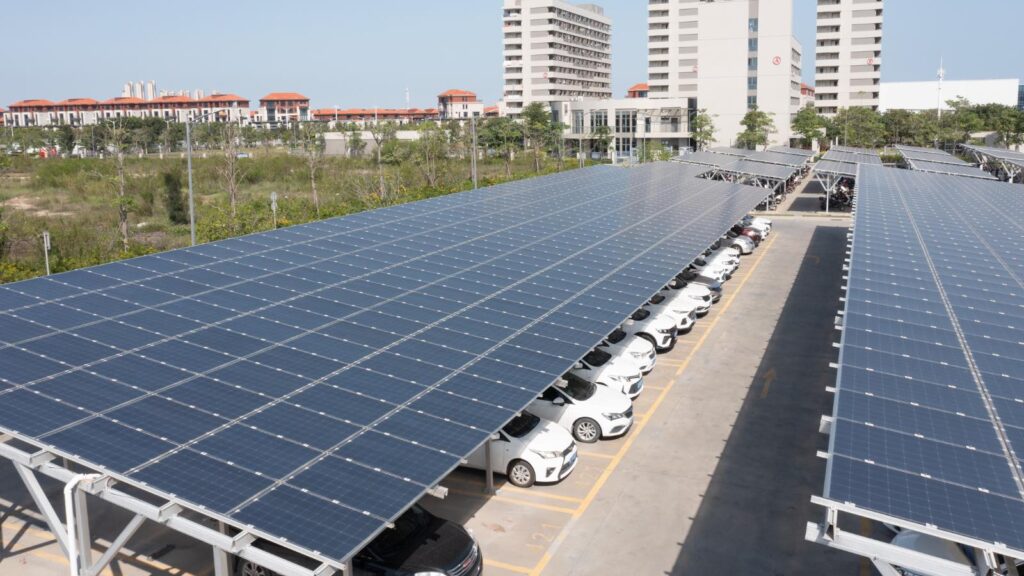
Solar energy is a key part of achieving net-zero emissions and practicing sustainability in the healthcare sector. Solar panels can be installed on the rooftops of healthcare facilities to generate clean electricity.
Facilities may also opt for solar carports, serving a dual purpose by providing shade to employees and customers while simultaneously generating electricity. Solar can also be used to power electricity for EV chargers, giving customers the luxury of charging their electric vehicles while inside the building.
Reduced Environmental Impact
Improved Public Health
Reduced Energy Costs
A number of healthcare organizations have already signed the Healthcare Sector Climate Pledge and invested in solar energy. For example, Kaiser Permanente has added over 44 MW of on-site solar generation, and Children's National Hospital has installed a solar panel system that will benefit the community by lowering utility costs for 325 families by up to $500 per year.
The Healthcare Sector Climate Pledge and solar energy are two important ways that the healthcare sector can reduce its environmental impact and improve public health.
Case study
AdventHealth Orlando, a faith-based, non-profit hospital campus in Florida, has installed the largest solar project in Orlando. The 850-kW solar carport on top of their McRae parking garage was installed in partnership with SunPower by esaSolar.
This installation, which includes 32 electric vehicle charging stations and is expected to save the facility over $4.6 million in energy costs, significantly advances the facility's sustainability goals and underscores its commitment to clean, renewable energy.
It is the largest solar project within the city of Orlando, and AdventHealth plans to install similar solar projects at other facilities in the Central Florida area in the future.
Sources
Navigating the challenges of energy efficiency might feel like a slippery slope, but for cold storage facilities, solar may be the solution.
As the backbone of supply chains in sectors ranging from food to pharmaceuticals, cold storage facilities guzzle electricity, racking up massive costs. Solar energy can ease operational complexities and offer a path to sustainability and cost-efficiency.
The cold storage industry has grown steadily at a Compound Annual Growth Rate (CAGR) of 2.3% over the past five years, reaching a total of $8.4 billion.
In 2023, the industry experienced a more significant increase of 2.5% in revenue, driven by the ease of restrictions and a renewed increase in restaurant demands.
Although cold storage services are predominantly used by industries in the food sector, cold storage companies also offer a range of services to pharmaceutical firms, hospitals, and other businesses in need of temperature-controlled storage facilities.
Cold storage facilities demand large, energy-intensive equipment, leading to significant operational costs within the industry.
To put this into perspective, a standard refrigerator warehouse alone can consume up to 25 kWh of energy per square foot annually. Given their energy intensity, the cold storage industry, as a whole, can rack up to well over $30 billion each year in energy costs. Energy costs associated with cold storage rank second only to labor costs and can account for up to 18% of a company's total revenue. As a result, cold storage facilities are always looking for new ways to reduce these significant costs.
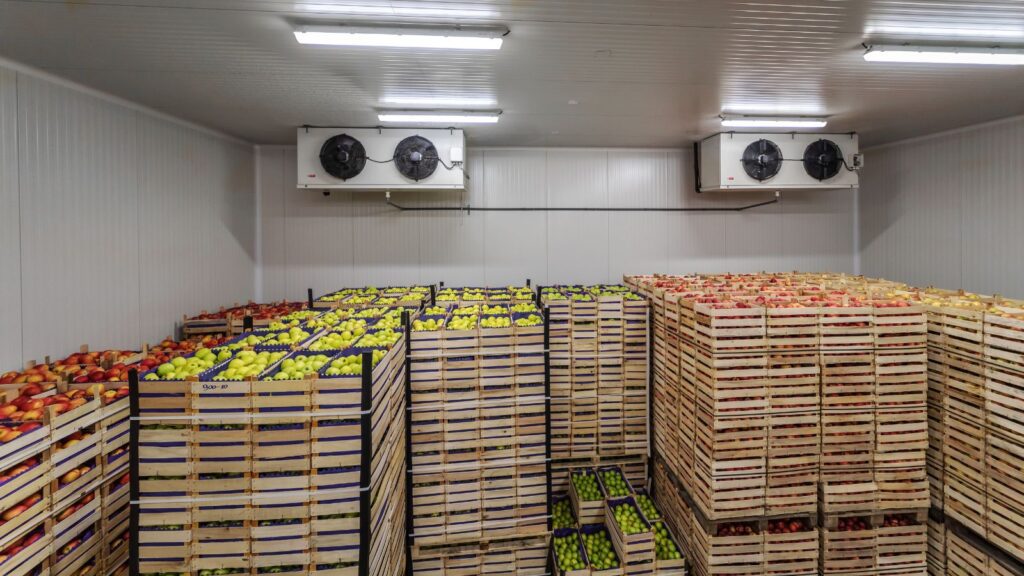
Cold storage facilities are substantial consumers of power and energy, primarily because they have to maintain consistent temperatures around the clock, every day, without any breaks.
The primary energy source for refrigeration technology is electricity, and it's utilized to remove warmer air from inside the unit, ensuring a cool temperature is maintained within. The process of converting heat into lower temperatures demands a significant amount of power, especially to ensure that the internal temperature remains cooler than the environment around. The refrigeration alone accounts for up to 80% of the facility's total energy consumption.
In a standard refrigerator warehouse, approximately 15% of the total energy usage is directed toward powering various components, including lighting fixtures, pumps, motors, conveyors, and fans. All these different components consume increasing amounts of energy, causing the overall energy costs of operating these units to rise.
As a result, the combined impact of these components using more and more energy leads to a consistent upward trend in the total operational expenses of these facilities. This continuous rise in energy expenses presents a significant challenge to the economic sustainability of refrigeration warehouses, highlighting the need to find ways to save energy and reduce these costs.
LED lighting is a fantastic choice for cold storage facilities due to its efficiency, especially when compared to traditional lighting. Traditional lights generate heat that can interfere with the cooling system's efforts to maintain the right temperature.

LED lighting can significantly cut energy consumption by 75% avoiding this heat issue while still offering excellent illumination for the facility. With LED lights, the cold storage industry can enjoy peace of mind, as they can last up to 75,000 hours or around 15 years and operate effectively in freezing temperatures. The durability and efficiency of LED lighting contribute to the overall cost savings and sustainability of cold storage operations. It's also the most frequently adopted initiative by companies aiming to enhance their energy efficiency.
LED lights In Cold Temperature
These specialized lights are specifically engineered to perform optimally in the cold and freezing conditions found in cold storage facilities. Unlike traditional lighting solutions that may struggle in extreme cold, LED lights remain reliable and efficient. They can withstand low temperatures without compromising on brightness or performance, making them the ideal choice for maintaining consistent lighting quality in cold storage settings. This enhances the overall operational efficiency and cost-effectiveness of cold storage facilities, establishing LED lighting as a valuable resource in this industry.
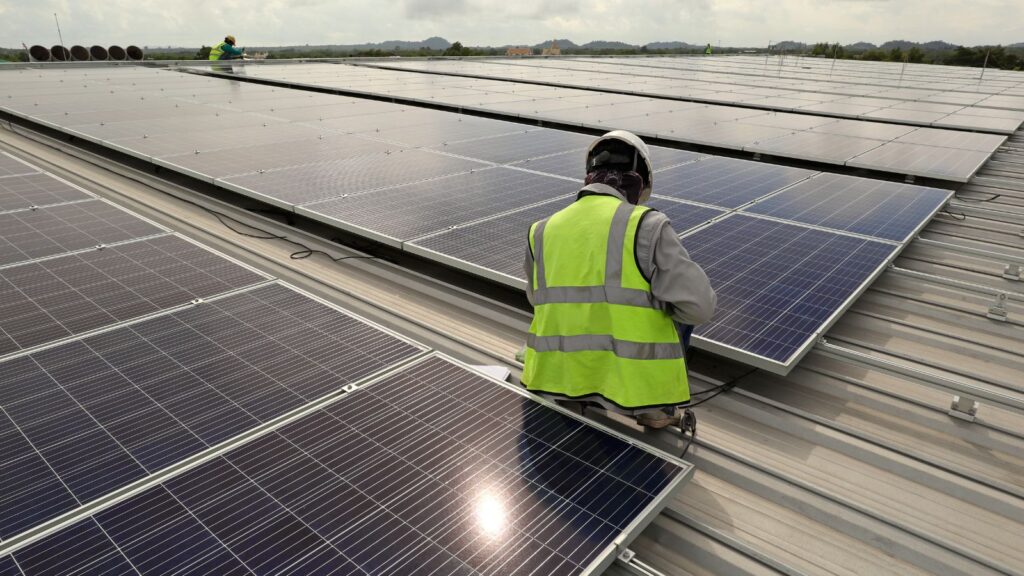
Solar-powered cold storage facilities play a crucial role in environmental preservation by reducing carbon emissions, contributing to the cold storage industry’s sustainable goals for the future.
When it comes to cold storage, solar energy offers numerous advantages.
Energy Savings
When combined with battery storage, solar can generate energy savings and enhance resilience during power outages. Solar also offers reliable energy, which gives cold storage facilities the ability to offset their peak demand, which is energy costs, allowing them to save more.
Financial Benefits
For cold storage facilities, the Inflation Reduction Act (IRA) represents a transformative opportunity to cut operational costs, decrease reliance on the grid, and support the renewable energy movement. This act offers a substantial $369 billion in federal incentives – the largest-ever government investment in addressing climate concerns. Its primary objective is to achieve a 40% reduction in carbon emissions by the year 2030.
Cold storage facilities can receive tax credit incentives that cover up to 70% of the investment, along with additional adders when they qualify for grants, further reducing the cost of the system.
When cold storage facilities invest in solar energy, they often experience a significant 35% reduction in energy costs. With an average payback period of 5 years, investing in solar power cuts expenses and plays a crucial role in reducing the carbon footprint of their operations, supporting their commitment to sustainability.

A Key Point To Consider
A substantial solar panel array is necessary to support the energy demands of a cold storage facility. If the facility has plenty of rooftop space, that would be the ideal spot for solar panels. However, if the rooftop is already crowded with equipment, a practical solution is to consider setting up a ground-mount solar system on an open area located on the property. This way, cold storage facilities can effectively capture solar energy and use their space wisely.

Automation is experiencing a surge within the cold storage space.
Besides the immediate cost-saving aspect of labor reduction, automation offers several compelling benefits. With automation technology, it offers a faster return on investment, making it an attractive choice for addressing labor challenges and improving energy efficiency in the cold storage industry.
Those embracing the implementation of automated storage systems are seeing the following benefits.
Faster Fulfillment
Cold storage automation results in fewer fulfillment errors, more accurate product selection, and streamlined operations, leading to faster and more reliable order processing and shipping.
Reduced Waste
Cold storage often faces challenges such as spoilage, contamination, and equipment failures, which can be costly. Automation enables closer temperature monitoring and stock rotation, allowing for quick responses to prevent damage and waste.
Energy Efficiency
Automation helps reduce the overall use of lighting in your facility, resulting in lower upfront energy costs. It also eliminates the need to manage excess heat generated by bulbs. These minor adjustments can lead to substantial annual operational cost savings.
Conclusion
Energy efficiency has become a top priority in the cold storage facility industry. With advancements in technology and a growing focus on environmental sustainability, the sector is undergoing a significant transformation. Cold storage facilities are adopting measures to reduce energy consumption and integrate renewable energy sources like solar panels. They're also implementing smart control systems for precise energy management and exploring energy-efficient lighting and automation. These efforts not only make economic sense but also align with global sustainability goals, reducing the carbon footprint of the industry.
Resources
Solar carport structures are a game-changing solution that combines the benefits of solar panels with the practicality of covered parking, offering an innovative way to utilize existing spaces while reaping long-term savings. Let's explore the ins and outs of solar carport structures, their benefits, costs, and how to choose the right design and installation partner.
Referred to as solar canopies sometimes, solar carports serve a dual purpose: providing shade for parked vehicles while generating electricity through their photovoltaic panels. This means that while your car stays cool and protected from the harsh Florida sun, the solar panels are hard at work converting sunlight into electrical energy.
Solar carports operate similarly to ground-mounted photovoltaic (PV) systems, with the racking structure attached to the ground. The solar capacity of a carport depends on the number and efficiency of the solar panels installed.
What sets solar carports apart from traditional solar installations is that they stand alone and serve as a shelter for vehicles while producing energy. Designing and installing solar carports require both electrical and computer engineering expertise to ensure optimal performance and safety.
Essentially, solar carports, alternatively called solar parking structures, creatively optimize parking availability while promoting a cleaner and more sustainable future.

A typical solar carport system consists of several key components:
The components of a solar carport system include:
Solar carports, often used for charging electric vehicles, are smaller-scale versions of solar farms, generating renewable energy in a more localized setting, with solar power generated efficiently.
The process of generating electricity with solar carports is simple: photovoltaic panels transform sunlight into electrical energy. A solar carport system usually consists of photovoltaic panels, mounting structures, and an inverter.
By doing so, solar carports offer efficient utilization of space, improved vehicle protection, and comfort, and help attract environmentally conscious customers.
The initial investment and installation costs can be offset by long-term savings and benefits, as well as any applicable incentives and tax credits.
Given the abundance of parking spaces, solar carports hold substantial potential in the United States. They offer numerous advantages, such as effective utilization of space, increased protection and comfort for vehicles, and the ability to draw in environmentally conscious customers.
In addition to these benefits, solar carports can also contribute to a greener future by generating clean energy and reducing greenhouse gas emissions.
Solar carports utilize existing parking areas, optimizing space and eliminating the need for extra land. This means that businesses and homeowners can save money and resources by installing solar carports in their parking lots instead of seeking additional land for solar panel installations.
This efficient use of space is one of the main advantages of solar carports, making them an attractive option for those looking to maximize the benefits of their property.
Providing shade and cooler temperatures for parked vehicles is one of the most notable benefits of solar carports. By protecting vehicles from the harsh sun, solar carports can help reduce fuel consumption and wear on vehicle components, such as paint and upholstery.
Furthermore, solar carports can provide natural cooling for parked vehicles, reducing the demand for air conditioning and, in turn, lowering energy costs.
In addition to the protective aspects, solar carports also offer improved vehicle security and the potential for electric vehicle (EV) charging capabilities. By providing a well-lit and secure parking area, solar carports can increase customer satisfaction and attract eco-conscious clientele, further enhancing the appeal of businesses that choose to invest in this green technology.
Demonstrating a commitment to sustainability and environmental responsibility, businesses can attract environmentally conscious customers and enhance their green reputation by installing solar carports.
Solar carports can offer businesses increased energy efficiency, reduced energy costs, and a more favorable green reputation.
Well-known companies like Walmart, Target, and Costco have already implemented solar carports, showcasing their commitment to sustainable practices and setting an example for others to follow.

Although solar carports require an initial investment, they also yield long-term savings, benefits, and potential incentives. However, the additional costs can be offset by the numerous advantages and long-term savings that solar carports provide.
In the form of decreased energy costs, reduced maintenance expenses, and increased property value, solar carports can yield long-term savings. By providing shade for vehicles and generating clean energy, solar carports can help lower energy bills and reduce the demand for air conditioning.
As a result, businesses and homeowners can save money on energy costs over time, making the initial investment in a solar carport more than worthwhile.
In addition to the financial savings, solar carports offer other long-term benefits such as increased vehicle protection and comfort, and the potential to attract environmentally conscious customers. These benefits can further enhance the value of your property and contribute to a greener, more sustainable future.
Incentives and tax credits are available to help offset the cost of solar carport installations. The federal solar tax credit, for example, is a 30% tax credit available for all solar projects, including solar carports, as per IRS guidelines.
By taking advantage of these incentives and tax credits, the overall cost of solar carport installations can be significantly reduced, making them an even more attractive investment.

Commercial and industrial settings can greatly benefit from solar carports by generating clean energy, reducing energy costs, and providing shaded parking for employees and customers.
Solar carports can optimize limited real estate, serve as a sustainable energy source for businesses, and even act as a distinguishing feature that sets the company apart from competitors.
This makes solar carports an attractive option for businesses looking to invest in green technology.
Educational and community institutions can also utilize solar carports to generate clean energy, reduce energy costs, and provide shaded parking for students, staff, and visitors. In addition to these practical benefits, solar carports can create learning opportunities for students, promote sustainability initiatives, and potentially save low-income schools tons of money.
For a successful project, selecting the right solar carport design and installation partner is crucial. Factors to consider when choosing a design include the location, available sunlight, and desired aesthetics of the structure.
Location, available sunlight, and desired aesthetics of the structure should be taken into consideration when designing a solar carport. These factors will affect the efficiency of the solar panels, the overall look of the carport, and the satisfaction of the end-users.
By carefully evaluating these factors, you can ensure that your solar carport investment is optimized for both functionality and visual appeal.
Solar carports present an innovative and practical solution for generating clean energy, maximizing space efficiency, and providing numerous benefits for users. From commercial and industrial buildings to educational and community institutions, solar carports are a versatile and eco-friendly investment with long-term savings and advantages. By carefully considering the design, installation partner, and potential incentives, you can make an informed decision and contribute to a more sustainable future for all.
In recent years, the concept of self-storage businesses has evolved beyond providing convenient spaces for personal belongings. Today, these innovative enterprises are embracing community solar, transforming their properties into large-scale systems that benefit both the environment and other businesses that may not have the space to install solar on-site.
Some facilities install solar on-site and offer subscription options to additional subscribers, fostering the concept of community solar/PPAs. By harnessing solar energy, these businesses not only offset their own costs but also generate revenue for themselves. This approach facilitates a sustainable future while promoting economic growth.
These solar projects show that businesses are changing how they view their impact on the environment and their communities. They're not just storage places anymore; they're examples of clean energy, lighting the way to a greener future.
Traditionally, self-storage businesses primarily served as energy generators for their own operations. However, forward-thinking entrepreneurs have recognized the potential for their properties to generate renewable energy for the wider community.
The concept of self-storage businesses investing in community solar extends beyond their immediate needs; it has the potential to create a ripple effect of positive change.
With the installation of large-scale solar systems, these businesses are transforming themselves into powerhouses of clean energy production, effectively becoming energy providers for their communities.
This transformation isn't limited to the self-storage industry alone; it sets an inspiring precedent for businesses across various sectors. By investing in renewable energy infrastructure, a single business can act as a catalyst for a wider shift towards sustainability.
It's an innovative approach that fosters economic growth, reduces greenhouse gas emissions, and promotes the responsible use of our planet's resources. As self-storage facilities embrace solar energy, they pave the way for others to follow suit.
This collaborative utilization of solar energy democratizes access to clean power. It means that not only businesses but also individuals can benefit from a local, reliable, and sustainable energy source. All the while having their own stake in where, and how they generate their own power.
The positive implications ripple throughout the community, leading to reduced electricity bills, a decrease in carbon footprints, and a stronger sense of shared responsibility for the environment.

The idea of integrating self-storage businesses with community farms is a brilliant solution that can transform how we think about energy production and distribution. Here's how it works:
Community farms are known for their vast open spaces, making them ideal for hosting renewable energy infrastructure like solar panels. Self-storage businesses can invest in renewable energy installations on these farms, effectively turning them into power generation hubs.
The energy generated by these installations doesn't have to be exclusively used by the self-storage facilities. Instead, it can be connected to the local energy grid, allowing surplus energy to flow to nearby homes, businesses, and industries. This creates a decentralized energy distribution system, reducing the reliance on centralized power plants and enhancing energy resilience.
By sharing the energy generated with the community, self-storage businesses become active contributors to the local energy ecosystem. They can negotiate agreements with the local utility or energy cooperatives to receive compensation for the excess energy they supply. This additional income can offset operational costs and even provide a new revenue stream.
The integration of renewable energy generation at community farms reduces greenhouse gas emissions, promoting sustainability and reducing the carbon footprint of self-storage businesses. It also aligns with the broader community's environmental goals.

This model promotes clean and renewable energy generation, contributing to a sustainable future while reducing dependence on fossil fuels.
Such initiatives can foster community engagement, as local residents and businesses will appreciate the self-storage facilities' contributions to the community's energy needs.
By diversifying the energy supply and reducing reliance on centralized power grids, the community becomes more resilient in the face of power outages and disruptions.
This approach demonstrates a commitment to environmental stewardship, which can improve a self-storage business's image and attract environmentally-conscious customers.
By investing in community solar, the potential for collaboration and resource sharing increases. Instead of individual businesses solely relying on their own energy sources, a unified system allows for a collective effort toward sustainability.
Through this collaborative model, businesses and individuals can tap into the generated energy, further reducing their environmental impact. Pooling resources shows a sense of community, and cooperation, creating a culture of sustainability and shared responsibility.
One of the most significant advantages of self-storage businesses offering community solar to others or utilizing PPAs is the financial benefit it offers. By generating surplus energy, these businesses receive compensation in the form of a check.
This additional revenue stream helps offset the initial costs of installing renewable energy systems while contributing to the overall profitability of the business. The decision to invest in community solar not only demonstrates a commitment to sustainability but also represents a wise financial decision.
The financial aspect of community solar should not be overlooked. Self-storage businesses can offset the costs associated with implementing renewable energy systems by capitalizing on the revenue generated through the shared energy infrastructure.
As the system becomes established and more businesses and individuals join the collective effort, the economic benefits multiply. This sustainable cycle ensures that the initial costs are recovered, and subsequent profits support the growth and maintenance of the community farm.
Conclusion:
The integration of community solar within self-storage businesses marks a shift in sustainable practices and a revolution of democratized energy generation. By sharing the generated energy among multiple businesses and individuals, these enterprises contribute to the local economy while reducing their carbon footprint.
Through collaboration and a commitment to sustainability, self-storage businesses are redefining their roles in society and becoming key players in the transition toward a greener future. As the potential for renewable energy continues to expand, the utilization of community farms represents a win-win solution for both environmental stewardship and financial success.
A solar farm is a large collection of solar panels that soak up energy from the sun and convert it into electricity. This electricity goes into the power grid to be distributed and is used by customers. These solar panels are usually mounted to the ground and can be of different sizes and shapes. At ESA, we develop the two most common types of solar farms: Community solar and Utility-Scale Solar.
Community solar refers to a setup where multiple people share the benefits of a single solar energy system. Instead of each individual having solar panels on their own property, a larger solar array is installed in a central location, such as an open field.
The electricity generated by the shared solar system is then distributed to participants, also known as subscribers, either as credits on their electricity bills or as a direct energy supply, helping them save on their energy costs.
Community solar is particularly beneficial for those who can't install solar panels on their property, like renters or people with shaded roofs. It enables a group of individuals to collectively support clean energy and receive the advantages of solar power.
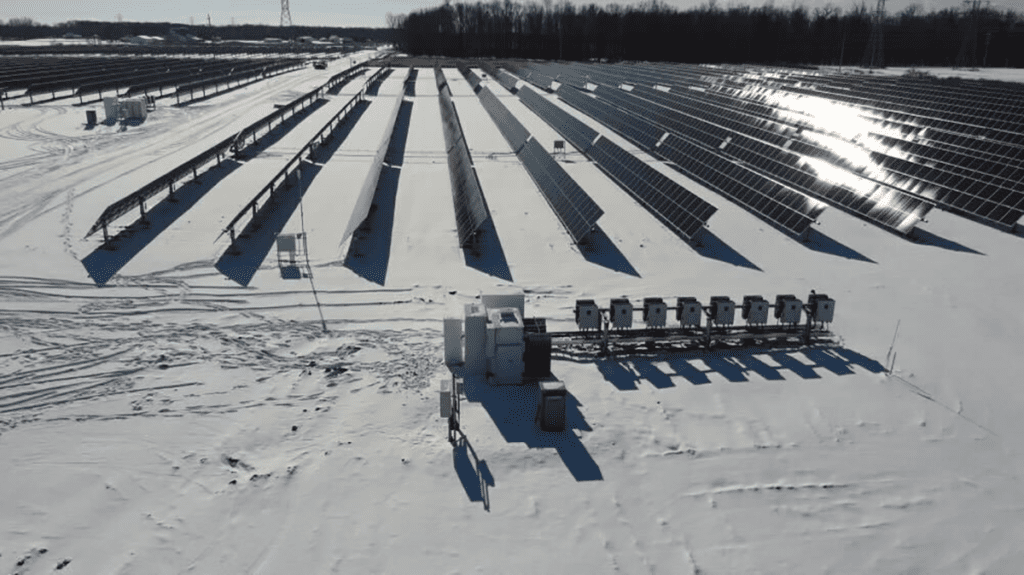
Utility-scale solar refers to large solar power installations designed to generate a substantial amount of electricity. These solar installations are characterized by their significant capacity, typically ranging from several megawatts (MW) to hundreds of megawatts.
Utility-scale solar projects are usually built to supply power directly to the electrical grid, rather than for on-site consumption. They involve the installation of a vast number of solar panels over a large area of land. These projects are commonly undertaken by utility companies, energy developers, or independent power producers and contribute significantly to meeting the energy demands of regions or communities.
Solar farms use empty land, mostly farmland. The panels are put on this land to turn sunlight into electricity, which goes into the power grid. Depending on the type of solar farm, the local power company pays the landowner for the electricity their solar farm makes.
Solar farms follow similar rules as rooftop solar panels for businesses. The difference is that solar farms are much bigger and use a lot of land to make and sell power to the local utility companies to make money. People are still learning about the impact of solar farms on the environment.
Solar farms can have a positive impact on the decarbonization of the electric grid by helping to reduce our reliance on fossil fuels, a major source of greenhouse gas emissions. They provide clean energy, create jobs, and boost the economy in local communities. A shift away from fossil fuels can improve air quality and reduce our exposure to harmful pollutants.
Types of solar farms Two kinds of solar farms exist: Community Solar Farms and Utility-Scale Solar Farms. The key contrast between these lies in their customer groups and size.
Utility-scale solar farms also primarily benefit public utility providers, whereas community solar farms aim at businesses, homeowners, and renters. A Utility-scale solar design is also much larger than a community solar farm design.
Below is a comparison table that compares community solar farms with utility-scale solar farms.
| Community Solar Farm | Utility Scale Solar Farm |
| Electricity is directly offered to customers to purchase. | Electricity is directly sold to utility companies. |
| Size ranges between 10-20 acres of land. | Size can be up to 3,000+ acres. |
| Can typically generate up to 5 MW of energy | Can typically generate up to 50MW of energy |
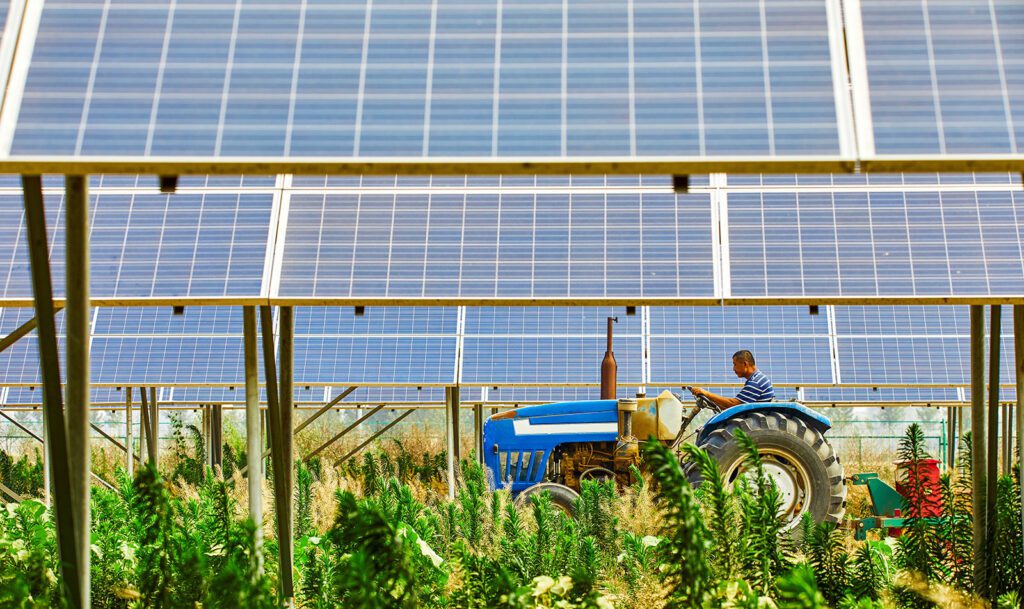
Solar farms make safe and locally sourced energy. They offer multiple advantages for landowners who are looking to turn their land into a solar farm.
Community Solar Farm
A community solar farm typically demands 10-20 acres to operate efficiently. These farms are designed to serve the energy needs of a local community or group of participants.
The exact amount of land required for a community solar farm varies depending on the size of the farm and the efficiency of the solar panels. The ideal geographic conditions for a solar farm include:
Solar farms can be built in a variety of locations, but they are most commonly found in areas with abundant sunlight. The land for a solar farm should be flat and open, with good access to the electrical grid. Some community solar farms benefiting more urban areas can be built on rooftops or in parking lots.
Utility-Scale Solar Farm
On the other hand, a Utility-Scale solar farm necessitates a more substantial land area, typically around 30-40 acres or more. These large-scale installations are optimized for generating significant amounts of electricity that can be fed into the broader power grid.
It's important to note that the required land area can vary based on factors such as the efficiency of the solar panels, the local climate, and the energy demands of the region.
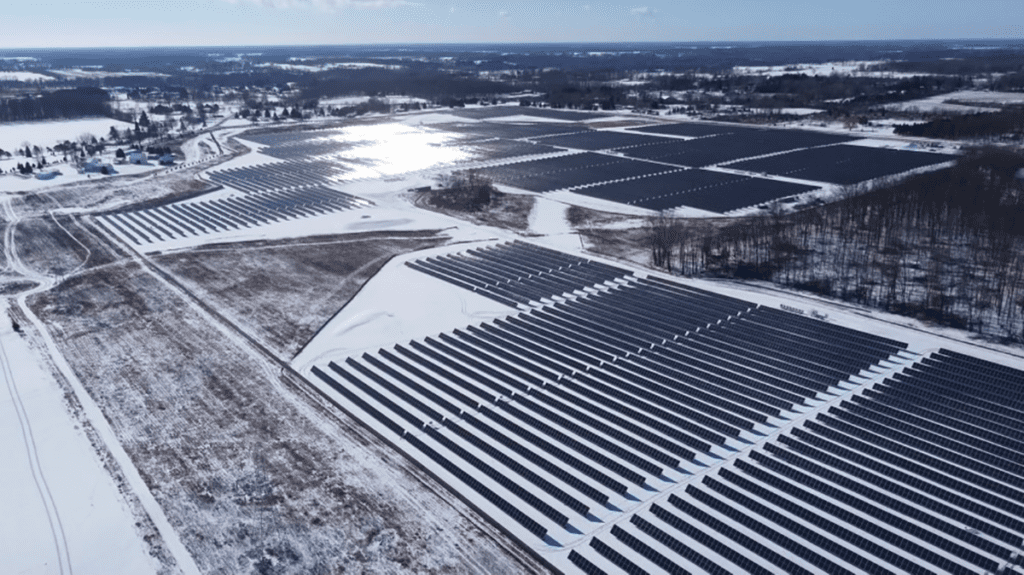
Solar farms make money by producing energy for the grid. Energy companies pay businesses and landowners for the energy they provide. This arrangement benefits both sides: the solar farms contribute to the energy supply while earning the landowner income.
Solar farms can also receive government tax incentives to help offset the cost. Any extra energy can be sold back to the grid when more is produced than needed. This helps both big companies and landowners earn money while supporting clean energy.
Developing solar farms projects is a multi-year process, and landowners can make money by leasing their land to companies like ESA throughout this process.
Solar farm installation costs typically range from $0.89 to $1.01 per watt. For a solar farm generating 1 megawatt (MW) of electricity, the installation expense would fall within the span of $890,000 to $1.01 million.
However, these costs can vary based on factors such as location, equipment quality, and installation complexity. Despite the initial investment, solar farms stand to deliver attractive returns over time, thanks to the revenue generated from electricity sales and potential incentives.
The duration of constructing a solar farm varies based on project size and workforce. Generally, a solar farm can be fully built in a matter of months. However, the process of selecting a site and obtaining permits is a lot more complicated. This phase can require 3 to 5 years to finalize all the essential agreements and authorizations for a solar farm.
Once construction is finished and the solar farm is operational, its maintenance demands are minimal, typically necessitating servicing around 3 to 4 times annually. Most solar farms can produce electricity for 2 to 3 decades.

Starting your own solar farm on your land is a smart choice. It helps promote clean energy and provides affordable power to communities. Even if you can't build or manage it yourself, you can lease your land for a solar farm, still supporting the environment while making money. This is the preferred method of starting a solar farm. Landowners who have leased their land to solar developers enjoy a steady recurring income without any of the hard work that comes with running a farming operation. It’s all possible with the power of the sun.
Solar energy is no longer just a buzzword like how it was with residential solar panels; it’s now a reality for businesses across the globe. As we move towards a more sustainable future, understanding the potential of commercial solar development is crucial for companies of all sizes.
In this blog post, we will delve into the importance of commercial solar, the different types of installations, key players, permitting processes, and the incentives available. By the end, you'll know all the benefits of this exciting renewable energy source.
Commercial solar systems, including commercial solar panels, are an invaluable asset that can help your business save money, reduce its carbon footprint, and contribute to a more sustainable future.
With a record 19 gigawatts of solar projects installed as of June 2022, the commercial solar market is rapidly growing, and businesses are recognizing the rewards of solar energy.
Investing in commercial solar panel installation can offer a myriad of financial advantages, such as reducing or even eliminating monthly electricity bills, lowering operating costs, and taking advantage of government, tax credits, and accelerated depreciation for reduced tax liability.
Opting for a commercial solar installation can be a smart decision for businesses looking to go green and save money in the long run by installing solar panels. Commercial solar power systems generate an impressive internal rate of return (IRR) and deliver a competitive payback period.
By investing in commercial solar for their commercial and industrial buildings, businesses are making solar energy a more prominent part of the energy mix, helping to reduce greenhouse gas emissions and supporting the transition to a low-carbon economy.
Commercial solar installations on buildings such as self-storage facilities, hospitals, and cold storage facilities save money and contribute to a cleaner environment.

Commercial solar can take various forms, ranging from kilowatts to megawatts, and are strategically placed on rooftops, the ground, or shade structures in parking lots or garages. These installations are designed to meet the specific energy needs of each business and maximize their energy efficiency there.
Rooftop installations are a popular choice for businesses with large, flat roofs and minimal shading. By making the most of the available solar space, and minimizing transmission losses, rooftop installations can provide significant energy savings and environmental benefits.
Solar carports offer a perfect combination of protection and clean energy for businesses. Providing shade and protection for vehicles while generating clean energy, solar carports are an ideal solution for properties with limited rooftop space.
The added benefits of shading and protection for employees’ vehicles make solar carports an attractive choice for businesses looking to invest in solar energy.
Ground-mounted systems are an ideal solution for businesses with ample land, as they can be customized to maximize energy production. These installations offer advantages such as easy access for maintenance and repairs, cooler temperatures compared to roof-mounted systems, and no concerns about roof leakage.
Developing a successful commercial solar project involves collaboration among various key players, including developers, contractors, and financiers. These professionals work together to design, install, and finance solar, ensuring a seamless process from start to finish.
Developers play a crucial role in commercial solar, assessing the potential by evaluating the site, local regulations, and financial incentives available. They design the solar system to meet the project’s needs, taking into account the size, orientation, and other factors to ensure successful completion.
Developers also manage the permitting process, obtaining zoning approvals, building permits, and interconnection agreements. Their expertise is vital to the overall success of the project.
Contractors are responsible for constructing and installing solar power plants, including engineering, design, procuring equipment and materials, and managing the entire project. They work closely with engineers and commercial solar installers to ensure the project meets the highest standards of quality and efficiency.
Financiers play a vital role in commercial solar by providing the necessary project funding. They can offer direct lending or collaborate with financial intermediaries to supply the required capital. Financiers can also facilitate leasing arrangements or offer loans to cover upfront costs.
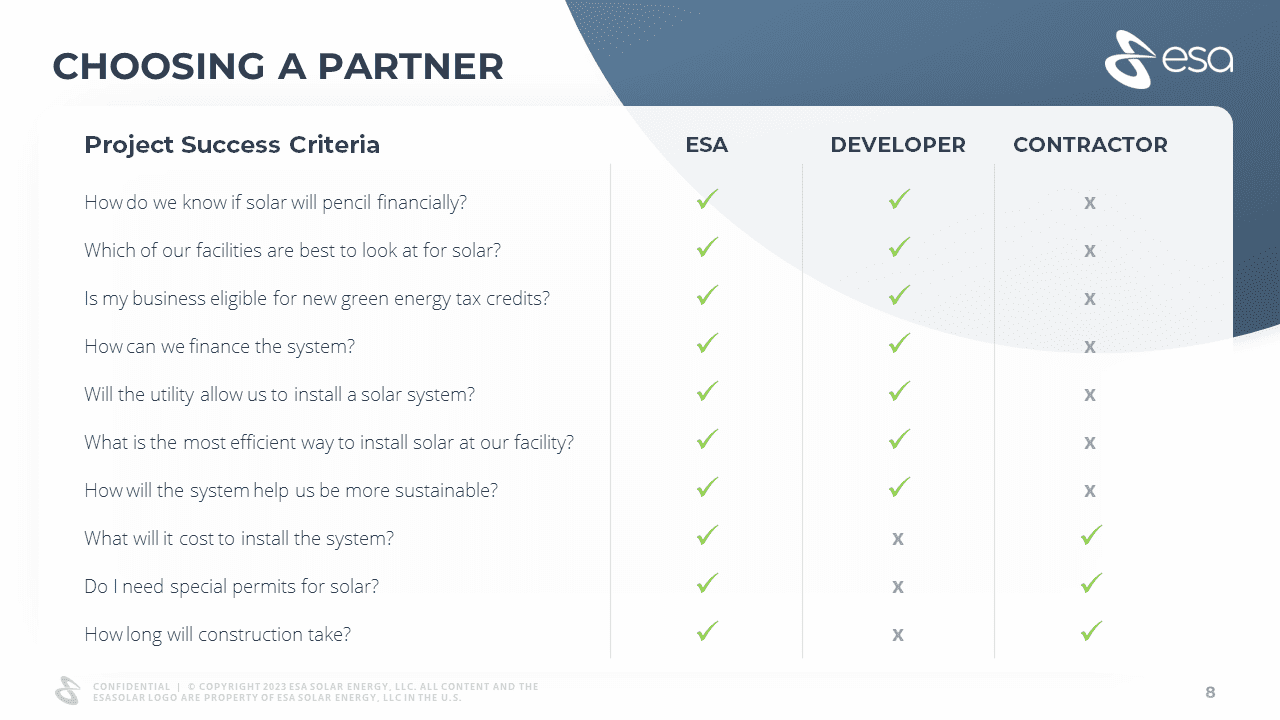
The commercial solar permitting process is a crucial step in bringing your solar project to life. It involves navigating zoning regulations, obtaining building permits, and securing interconnection agreements with utility companies. Understanding and managing the permitting process can help ensure a smooth and successful solar project.
Zoning regulations determine where solar installations can be built and may impose restrictions on system size or location. Understanding these regulations is essential to ensure that your solar project meets all regulatory requirements and is sustainable, protecting the environment from potential harm.
Building permits are essential documents issued by local governments that certify that a proposed construction project complies with all applicable building codes and other regulations. For commercial solar, essential building permits usually include an electrical permit, a construction or building permit, and a solar permit.
Interconnection agreements are contracts between a solar system owner and the utility company that outline the terms and conditions for connecting the solar system to the grid and selling excess energy back to the utility.
These agreements can include system size, equipment type, voltage, safety requirements, and the rate at which the utility will purchase any excess energy generated.
To further boost the ROI of your commercial solar project, it’s essential to maximize available incentives and rebates. These financial benefits for commercial installation come from federal, state, and utility-level programs and can help offset the upfront costs of solar installations.
By working with experienced solar contractors, you can ensure the success of your solar project and take full advantage of these incentives.
The Inflation Reduction Act (IRA) is a game changer for businesses looking to cut costs, reduce reliance on fossil fuels, and support clean energy with solar power. This law has huge implications for US clean energy projects, with $369 billion in federal incentives—the largest ever climate investment by the government. It aims to reduce carbon emissions by 40% by 2030.
The ITC, as a tax credit, allows your company to deduct a portion of the cost of your new solar system that you would otherwise have to pay the federal government in corporate income taxes. The IRA grants a 30% tax credit to independent energy storage installations.
Solar power projects that qualify for the full 30% tax credit can raise their tax credit by 10% by confirming that all steel, iron, or manufactured goods used in the facility were manufactured in the United States.
State-level programs offer utility providers additional financial incentives, such as rebates, grants, or low-interest loans, to encourage commercial solar. These programs vary by state and utility companies but can provide valuable financial support for businesses looking to invest in solar energy.
Payback periods, or the time it takes for energy savings to cover the initial investment, can vary depending on the specific project and financial incentives. A typical payback period for commercial solar projects ranges from 3 to 10 years, providing an appealing opportunity for businesses to save money and reduce their carbon footprint.
Commercial solar farms can be highly profitable, with an average annual profit of $21,250 to $42,500 per acre, according to 8 billiontrees. In addition, many solar farms pay off their system within five to ten years and generate free electricity for at least 30 years thereafter.
Commercial solar offers businesses numerous advantages, such as cost savings, environmental sustainability, and energy independence - making it a smart choice for any business.
Solar energy is becoming increasingly popular as businesses look for ways to reduce their energy costs and become more environmentally friendly. With the cost of solar energy dropping, businesses can now take advantage of the savings and environmental benefits that solar energy provides.
Hospitals are essential institutions that provide care, treatment, and support to patients in need. However, these facilities also consume a significant amount of energy to sustain their operations. With the growing concern for sustainable energy practices and reducing carbon footprints, hospitals can now adopt renewable energy sources with Solar Panels For Hospitals.
Solar panels for healthcare facilities not only reduce dependence on traditional sources but also offer numerous benefits such as cost savings, a reliable backup power source, and environmental conservation. In this blog post, we explore how ESA can support hospitals seeking a renewable energy solution and revolutionize the healthcare industry.
Healthcare is a heavily regulated field. Clinic and laboratory systems use electricity as lighting devices, refrigeration equipment, and other important operations. This large energy requirement can have three main consequences:
Increasing solar energy is helping hospitals minimize these risks. Producing their own energy for distribution and selling excess energy will assist healthcare organizations to cut their monthly energy costs dramatically. Solar energy has a positive environmental value and does not emit greenhouse gases.

Solar power is a clean and renewable energy source for healthcare facilities. Adopting solar technology in healthcare facilities offers various advantages such as cost savings, environmental conservation, and improved quality of life within the healthcare facility premises.
One of the primary benefits of solar panels for hospitals is cost savings. Electricity bills account for a significant portion of hospital expenses, and solar power can help reduce these costs significantly.
In addition to financial benefits, solar installations at hospitals also contribute to environmental sustainability and conservation. By using renewable energy sources like solar power, healthcare facilities can reduce their carbon footprint and promote sustainable practices.
Moreover, strategic placement of solar panels can also provide shade and insulation to buildings, which helps regulate indoor temperatures during extreme weather conditions. This not only reduces energy consumption but also provides comfortable living spaces for patients and staff members alike.
Solar Installations at hospitals provide an excellent opportunity for healthcare organizations seeking sustainable solutions that reduce operating costs while maintaining the power supply for critical operations during blackouts or natural disasters.
Hospitals are energy-intensive facilities that operate 24/7, and as a result, they require highly reliable and efficient power sources. Solar energy systems at hospitals have emerged as a viable solution to meet the ever-increasing energy needs of these medical facilities while reducing their carbon footprint.
Solar panels can be installed on rooftops, parking lots, or unused land to generate clean electricity for use within the hospital. Hospitals can also install solar hot water systems to meet their hot water demand. The installation process involves identifying suitable locations for panel placement, conducting feasibility studies, and designing an optimal solar system, size, and configuration based on energy demand patterns.
Another way of installing solar power for hospitals is the construction of solar carports on parking lots and garages. Solar car parking areas provide a safe environment to shade parked vehicles and also produce electric power for healthcare facilities.
With rising utility rates and volatile fossil fuel prices, investing in solar power ensures predictable electricity costs for many years into the future. Additionally, installing solar panels demonstrates a hospital's commitment to sustainability and environmental stewardship.
When it comes to installing solar panels at hospitals, strategic placements are key. The location of the panels can make a significant difference in their overall effectiveness and efficiency.
One important factor we will first determine is the best location for the panels to receive optimal sunlight. In most cases, positioning them facing south will ensure maximum sun exposure throughout the day.
Another consideration is finding areas with little shading from nearby buildings or trees that could block sunlight. It's also important to consider any potential obstructions such critical equipment such as AC units or vents that may interfere with panel placement.
Installing solar panels on rooftops is a common strategy for healthcare organizations, but ground-mounted solar systems also are also an option if there isn't enough space on the roof. Ground installations require additional considerations such as proper anchoring and security measures.
Careful planning and attention to detail when placing solar panels at hospitals can lead to greater energy savings and a more sustainable future for healthcare facilities.

Healthcare organizations have a significant role to play in the transition toward renewable energy. One of the main solutions is investing in solar power systems. Solar panels for healthcare can help reduce electricity bills and carbon footprint, while also providing backup and reliable power supply even during emergencies.
One solution is through Power Purchase Agreements (PPA) where hospitals lease their roof space to solar installation companies, who then install and maintain the solar panels. Healthcare facilities don't have any upfront costs with PPAs and still benefit from lower energy bills.
Another solution is installing battery storage systems along with solar panels that store excess energy generated during daylight hours. This stored energy can be used at night or during high-demand periods when utility rates are higher, reducing reliance on traditional grid electricity.
It's important for healthcare organizations to evaluate their current energy usage patterns and identify areas where they can improve their energy efficiency, before implementing any solutions. Hospitals should also consider working with our experienced team at ESA to custom-design their healthcare facility PV system. While many solar installation companies may install solar projects, few specialize in designing customized solar systems tailored to meet specific healthcare facility needs.
By taking advantage of these solutions, healthcare organizations can not only decrease operational costs but also contribute significantly towards sustainable development goals by reducing greenhouse gas emissions and promoting environmental conservation efforts.
It's no surprise that Hospitals are one of the largest consumers of energy, and solar technology has proven to be a cost-effective solution for them. Here are some ways hospitals conserve with their solar energy systems:
Incorporating solar technology into healthcare facilities not only benefits the environment but also improves patient care by reducing costs and increasing operational efficiency during emergencies or natural disasters.
When it comes to implementing solar panels in hospitals, there are several challenges and opportunities that come with it. One of the biggest challenges is the initial investment required for installation as well as ongoing maintenance costs. However, this can be offset by significant long-term savings on energy bills.
Another challenge is finding suitable locations for panel placement, especially in urban areas where space may be limited. Hospitals also need to consider their energy needs and ensure that the solar panels installed will meet those requirements while also complying with local regulations.
While there are certainly some roadblocks when it comes to implementing solar projects at healthcare facilities, the potential benefits far outweigh any challenges faced along the way. As technology continues to improve and costs decrease over time we expect this trend only continue upwards!

The healthcare industry is constantly evolving and seeking innovative ways to improve patient care while having less environmental impact and reducing costs. As the world becomes increasingly energy-conscious, solar power has emerged as a promising solution for hospitals looking to reduce their carbon footprint and save on electricity expenses.
Going forward, we can expect to see more healthcare facilities turn to solar panels for their own energy supply needs. With advancements in technology, solar panels are becoming more efficient and cost-effective than ever before.
In addition, there will likely be increased collaboration between the healthcare industry and renewable energy companies. This could result in custom-designed solar panel systems tailored specifically for hospital settings. Click here to view our case study on our project with Advent Health in Orlando Florida.
Moreover, we may also see an increase in government incentives aimed at encouraging hospitals to switch to renewable energy sources such as solar power. These incentives could include tax credits or grants that help cover the initial investment required for installing new solar panel systems.
It's clear that the future of solar power in the healthcare industry looks bright. As concerns about climate change continue to grow, we can expect more hospitals around the world to embrace the sustainable energy solutions that ESA provides - ultimately leading us toward a greener and healthier planet for generations to come.
Imagine a future where a company's carbon footprint and scope 2 emissions vanish without sacrificing profits. Welcome to a world where your energy bill is no longer a liability but an asset that drives sustainable growth. A world where you are no longer at the mercy of fluctuating energy prices but harnessing the consistent and abundant power of the sun.
American businesses are uniquely positioned to champion this change, ushering your company into an era of responsible prosperity. This isn't just a lofty vision—it's a tangible reality made possible by commercial solar development.
Investing in solar energy not only helps your business reach impressive ESG (Environmental, Social, Governance) milestones, but it also secures long-term financial advantages, fostering resilience in an ever-evolving economic landscape. If you're ready to align your financial ambitions with environmental stewardship, then it's time to seriously consider solar as a viable business decision.
ESG stands for Environment, Social, and Governance. Environmental factors include a company’s impact on the natural environment, such as its carbon footprint or use of natural resources. Social factors relate to how a company interacts with its stakeholders, including employees, customers, and communities.
Governance factors refer to a company's internal management and control structures, such as the board of directors, executive pay, and shareholder rights.
Businesses are adopting sustainable business strategies as a result of a growing understanding that they must take the lead in solving a variety of environmental issues. As the years begin to pass by, companies now view sustainability as a strategic priority as they set themselves up for the future. Due to the impact of concerns like climate change and social justice on investors, ESG investing has gained prominence in recent years.
The momentum of ESG investing experienced a significant boost during the years of 2013 and 2014 when the first studies were published and clearly showed that companies with strong sustainability performance also had good financial results.

Scope 1 pertains to the emissions that directly enter the atmosphere as a result of the activities carried out by the company. To put it differently, these emissions of greenhouse gasses originate from the resources that are owned and managed by the company itself. This includes gas used in company cars and fuel used to power equipment.
Scope 2 is purchased electricity. In other words, it is related to the emissions of greenhouse gasses caused indirectly through the consumption of electricity, steam, heat, and cooling in buildings and production processes.
Scope 3 encompasses all additional emissions indirectly linked to a company's operations both upstream and downstream. Scope 3 is generally the primary driver of a company's carbon footprint as it encompasses factors such as:
Scope 2 emissions offer significant opportunities for reduction via decarbonization as a service strategy. This concept involves engaging external experts to help design, finance, implement, and manage customized clean energy solutions that lead to carbon neutrality. A primary mechanism is the adoption of solar development strategies, which replace carbon-intensive energy sources with clean, renewable ones.
Scope 2 emissions typically constitute a large proportion of an organization's carbon footprint and can be controlled directly through the choice of energy source. By partnering with a solar development business, companies can leverage cutting-edge technologies and expertise to transition to renewable energy.
Not only does this approach contribute towards ESG goals by reducing carbon emissions and combating climate change, but it also makes good business sense.
It can lead to energy cost savings over time, enhance corporate reputation, and position companies to better manage future regulatory risks around carbon emissions. Therefore, a 'decarbonization as a service' strategy targeting scope 2 emissions is both a sound environmental and business move.

Solar power has emerged as a highly effective solution for offsetting Scope 2 emissions for businesses. By generating electricity directly at the location where it is consumed, onsite solar systems eliminate the need for grid-supplied power, which often relies on fossil fuel-based sources.
Solar panels harness the abundant energy from the sun, converting it into clean and renewable electricity. This sustainable energy source effectively displaces the use of electricity generated from fossil fuels, reducing carbon dioxide emissions associated with Scope 2 emissions.
By adopting onsite solar, businesses and organizations can significantly mitigate their environmental impact, and decrease their reliance on non-renewable energy sources.
As an example, Kohls, a clothing manufacturer, collaborated with a US solar company, with the objective of installing solar panels in their stores back in 2007. As a result, reports suggest that 40% of Kohl's stores now rely on solar-generated electricity.
Community solar plays a crucial role in mitigating scope 2 emissions by offering a practical and accessible solution for individuals, businesses, and communities to transition towards cleaner energy.
Community solar refers to local solar installations that are shared by a number of community customers, each of whom receives a credit on their electricity bills for their share of the power produced. This model for solar energy is being rapidly adopted nationwide.
This gives businesses the ability to tap into the benefits of renewable energy without the need for costly infrastructure investments. They can align their sustainability goals with their energy consumption, offset their scope 2 emissions, and demonstrate their commitment to the environment by reducing their carbon footprint.
By participating in a community solar program, US businesses have the opportunity to benefit from solar energy and enjoy energy bill savings of 10-15%.
A Virtual Power Purchase Agreement (VPPA) is a financial contract that provides Renewable Energy Credits or Certificates (RECs) from a specific renewable energy project located off your company’s property. It is among one of the most powerful tools that businesses use to offset their scope 2 emissions.
By sourcing renewable energy through VPPAs, businesses effectively displace the use of fossil fuel-based electricity, which contributes to scope 2 emissions. A significant advantage of VPPAs is that they enable companies to promote the expansion of renewable energy without the need to personally handle the physical assets involved.
This is beneficial for companies lacking the help or resources required to develop and manage their own renewable energy projects.
VPPAs offer scalability and allow buyers to achieve a significant portion of their sustainability objectives through a limited number of agreements.
An example of this is Fifth Third Bank, which successfully achieved its 100% renewable energy goal through a single VPPA. This demonstrates the effectiveness of VPPAs in enabling buyers with widely distributed electricity loads or loads in regulated markets to swiftly offset their scope 2 emissions and fulfill their renewable energy objectives.
Renewable energy credits are intangible commodities that can be traded and serve as evidence that 1 MWh of electricity originated from a renewable energy source and was injected into the interconnected power grid for distribution.
RECs enable the transfer of the renewable aspects of renewable energy to the company, meaning that when you combine RECs with grid electricity, renewable energy is effectively being generated on your company's behalf.
With these credits, a solar farm has the ability to sell its generated power to the grid while also selling credits associated with that power to corporations and other buyers. By purchasing these standalone credits, corporate buyers can declare that they have achieved their clean energy targets and have offset their scope 2 emissions.
Companies that have purchased RECs to help them pursue their ESG goals and lower their scope 2 emissions are Starbucks, Stapes, and Johson & Johnson. It is very common for huge corporations like the ones listed to participate in the buying of renewable energy credits.
Your future deserves to be powered by clean energy. Connect with our team and we will guide you through the clearest and most effective path to solar.